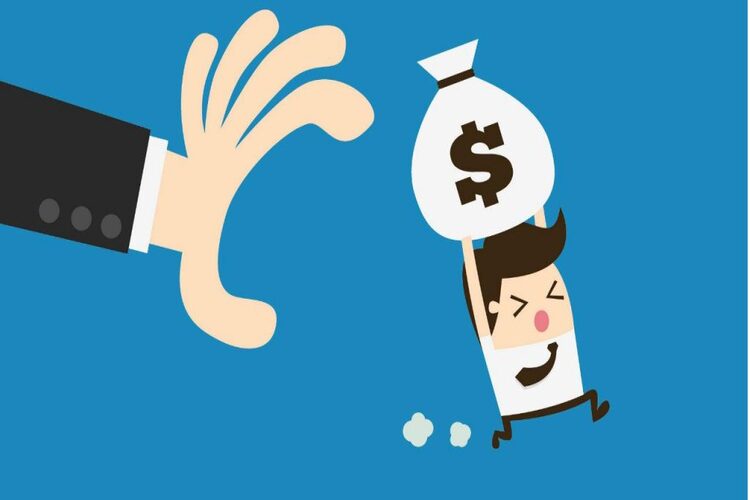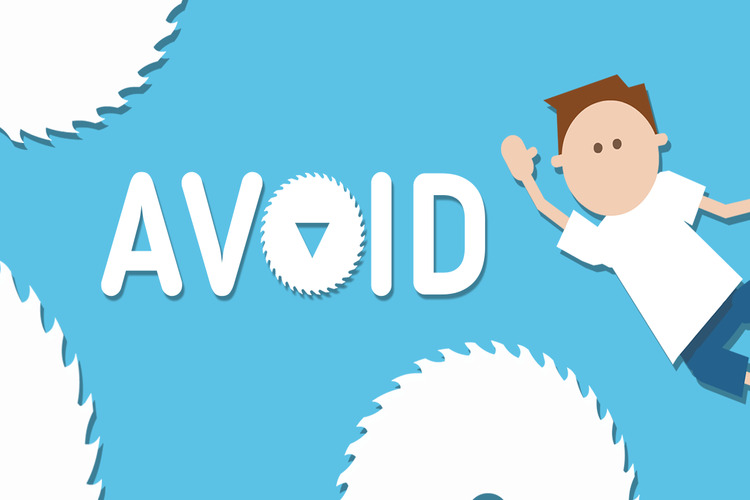eBay listing optimization is a common technique for getting your product listings to the top of eBay search results and increasing traffic to your eBay business. The strategy aids eBay sellers in achieving their ultimate goal of increasing sales.
A good listing will help your items easily reach the right buyers. Put yourself in the buyer’s shoes to understand how it should be. Which listing will pique your interest and lead you to purchase? In this article, we will show you step-by-step to succeed with eBay listing optimization as well as transform your ordinary listings into fast-selling ones. But first, we’ll talk about the different types of eBay selling fees that affect directly your profit.

10 Ways to Succeed with eBay Listing Optimization
1. Types of eBay selling fees
Insertion costs are levied when you create a listing, final value fees are charged once your item sells. The price of your items, the format, category you choose for your listing, any optional listing upgrades you make all factor into the amount eBay charges. Let’s look at a few different types of selling costs, in addition to insertion and final value fees.
1.1 Monthly account fee (eBay stores only)
If you sell a variety of products and want to make them all available in one place, open eBay store is a terrific alternative. When you first join up for an eBay Store, you can choose between Starter, Basic, Premium, Anchor, or Enterprise. You can also choose between automatic monthly or yearly renewals. In any case, eBay will cost you monthly until you cancel your subscription.
1.2 Insertion fee
The insertion fee, commonly known as the listing charge, is charged each time you list an item on eBay, regardless of whether it sells.
Every month, all sellers are provided a certain number of free listings. Sellers who subscribe to the eBay Store get more zero-insertion-fee listings each month than those who don’t. The amount you get depends on which store subscription you choose. Keep in mind that the amount you can sell is limited, and some categories are not qualified for the free insertion charge.
1.3 Listing upgrade fee
You might use a bold headline, additional Gallery plus, a subtitle, Value Pack or the listing designer, scheduling listing… to make your listings stand out. All listing upgrade fees are optional, and rates for these optional listing enhancements can range from free to relatively expensive depending on the item’s price, listing style, and length.
1.4 Final value fee
You’ll be charged a final value fee every time you sell something on eBay. It’s included in the total selling price, which includes your delivery fee but does not include sales tax. The typical price is 10% of the final amount, up to a maximum of $750. Some categories have fees that range from 2% to 12%..
If you’re not careful, your fees might eat up a big portion of your profit. For more detail how to reduce eBay selling to make a successful eBay business you can visit: https://podorder.io/reduce-ebay-selling-fees-for-maximum-profit/

2. How to succeed with eBay listing optimization
eBay listing optimization is the key to maximize your success in doing online business but It’s a good idea to plan ahead and know a few things before approaching it. Take a look at the three most critical things to figure out before beginning your eBay listing optimization.
- Determine one aspect that encourages your target consumer to purchase your products and one that discourages them from doing so.
- Keep an eye on what your competitors are doing and what methods they’re using to get customers to buy their stuff.
- Decide how you’ll track the performance of your listings and how you’ll improve it.
When you take all of those factors into consideration. Now it is time to get started with how to get success with an eBay listing optimization.
The eBay Cassini takes into account relevance, customer behaviour, and the seller’s track record, eBay listing optimization is more than just adding the proper keywords. It’s also critical to raise your seller profile and deliver the greatest possible purchase experience.
The 10 steps to accomplishing this are outlined below. I’ll start by discussing techniques to improve your seller profile (steps 1–4), then move on to how succeed with eBay listing optimization (steps 5 to 10). The 10 steps to accomplishing this are outlined below. I’ll start by discussing techniques to improve your seller profile (steps 1–4), then move on to eBay listing optimization (steps 5 to 10).

2.1 Pick a seller name that describes your business
While it’s unknown whether eBay Cassini takes a seller’s username into account when ranking them, it’s a good idea to pick an eBay handle that’s linked to what you’re selling. It establishes credibility and conveys the impression that you are an expert in that field.
2.2 Incorporate a few keywords into your profile description
Keep your bio short and easy to read. eBay sets a 250-character limit, so you need to tell customers what sets you apart and why they should do business with you in as few words as possible. Including keywords related to your niche makes your store more relevant in the search results.
2.3 Use a profile photo that reflects the business’s brand
Create a profile picture that accurately represents you or your company. If you’re utilizing a personal eBay account, you can go with a photo or graphic for your profile image. If you’re using an eBay business account, though, you’ll want to use a branded logo.
When it comes to image size, eBay suggests 300×300 pixels with a minimum resolution of 72 DPI.
2.4 Create a solid seller reputation and track record
Your track record and eBay rankings have the power to make or break your profile. eBay examines seller performance, taking into account ratings, reviews, customer disputes, and responsiveness.
Sell your products at reasonable prices and describe the items in your listings as accurately as possible so that customers always know what they’re getting. Make it a point to be responsive and polite to buyers, and to respond quickly.
Performing the aforementioned actions will assist you in obtaining higher ratings and positive reviews, which will result in higher eBay rankings and more customers.
2.5 Optimize titles with keywords
Begin by using a tool like Google Keyword Planner to find keywords. Make a list of the most frequently searched words and phrases, then pick the ones that are most related to your product. Avoid using too many keywords in your titles, as this will make them long and difficult to read. Keep in mind that you may always add more keywords to your description. I suggest using only one keyword in your title and saving the rest for your profile description and product listings. This is critical for optimizing your eBay listing.
If your product listing matches what a customer was looking for when they typed a search query, they are more likely to click on it. This, of course, will result in more conversions, signalling eBay that your goods should be prioritized for that term or search phrase.
The greater the visibility of your products in a customer’s search results, the more traffic your eBay store will receive. This is largely dependent on how well your listing optimization for keywords. This step is necessary for your eBay listing optimization.
2.6 Use related keyword
While it’s important to include your focus keyword in your product description, doing so too often may result in a long, unreadable description. Rather, search for and use synonyms for your keyword. Where are these synonyms to be placed? The eBay store name is one thing to keep an eye out for. Place a relevant term in it instead of giving it a distinct name. This information will also be included in the URL.
Fill out the alt text on photographs and stuff the product description with keywords. Search engines utilize alt text to determine whether a listing is relevant to a search keyword. If the alt text field is blank, the search is skipped.
Search engines utilize alt text to determine whether a listing is relevant to a search keyword. If the alt text field is blank, the search is skipped. You’ll be on your way to becoming an eBay superstar if you pay attention to use related keywords for eBay listing optimization.
2.7 Keywords should account for about 5% to 7% of your description
The keyword density in your descriptions should be between 5% and 7%, according to eBay. So, if you’re writing a 200-word product description, you should employ your keywords and synonyms 10–14 times.
2.8 Provide as many details about the item as possible
When creating a product listing, a seller can specify item details such as size, style, colour, material, and more. Buyers seek to limit down their search results to as few listings as possible while looking for a product. They do it by selecting item details from eBay’s side menu. Let’s imagine someone is looking for your goods, but they prefer it in brown. The buyer will not see your listing if you do not choose a colour. When writing an eBay listing, include as many item characteristics as possible to avoid getting left out of searches.
2.9 Unique identifiers should be included
Including unique identifiers such as Universal Product Codes (UPCs), European Article Numbers (EANs), International Standard Book Numbers (ISBNs), and Manufacturer’s Part Numbers in your listings is one of the most critical things you can do to ensure your listings are found by search engines. Unique identifiers assist search engines in locating a product for those wishing to purchase it. Thankfully, eBay makes including codes in your listing a breeze. Along with a detailed explanation, be sure to include identifiers.
2.10 Use High-Quality, Mobile-Friendly Visuals
When it comes to selling things online, pictures are crucial. They are the deciding element in the majority of purchases. For eBay listing optimization, using clear, appealing, and high-quality product photos is a smart strategy. Pay great attention to your product pictures when producing listings for your products.
- When choosing a backdrop, make sure it’s simple and uncluttered.
- To avoid undesired light spots, utilize diffused lighting.
- Use tripods to prevent hazy and unsteady images. Take detailed, high-resolution close-up pictures.
- Make use of photos to give buyers a variety of perspectives on your products.
- Make sure they present your merchandise from a variety of perspectives. As a result, customers know exactly what they are getting.
Your goal with photography should be to allow your customers to view every last aspect of your goods without having to examine it in person. You can increase sales by giving customers confidence in their buying decision.
3. What should we avoid for better eBay listing optimization
We discussed eBay listing optimization earlier; this strategy is critical for putting your product listings to the top of eBay search results and driving traffic to your business. , in this section, we’ll go over some of the things you should avoid doing in order to boost your business’s traffic.

3.1 Stuffing keywords into your titles and descriptions
Keyword stuffing is the practice of oversaturating a text with keywords.. It degrades the user experience by making the text difficult to see, which can result in penalties and lower eBay rankings.
What should you do? Don’t use too many keywords, and stick to eBay’s recommended keyword density of 5–7%. Also, keep in mind that you’re writing for people, not search engines. Read a sentence out loud to see if it reads good and doesn’t come across as spam. If something doesn’t seem right to you, it won’t feel right to your customers.
3.2 Titles that are clickbait
You might believe that adding attention-getting phrases like “wow!” or “must try!!!” will help your listings rank higher, however these terms have no bearing on SEO. Buyers don’t look for these things (and are probably annoyed by them), therefore you’re just stuffing superfluous words and characters into your titles. it doesn’t bring efficiency for your eBay listing optimization.
3.3 Making use of hidden text
Making text invisible or changing the colour of text such that it blends into the backdrop is unacceptable and violates eBay’s search engine criteria. As a result, our listing can be poorly ranked or your account getting penalized by eBay.
4. Final thought
eBay has grown to be one of the most popular online selling platforms for sellers, resulting in fierce competition in the online marketplace. And, as a seller, it takes a lot to set yourself apart from the competition. In 2018, eBay had 25 million sellers and a community of 168 million active buyers. There are more businesses than ever before vying for the same customer with similar products.
If you want to create a long-term business on this platform, you’ll need particular talents and knowledge to outperform your competition and increase your product’s visibility among a million others, eBay listing optimization is a common technique for getting your product listings to the top of eBay search results and increasing traffic to your eBay business. This strategy aids eBay sellers in achieving their ultimate goal of increasing sales.

